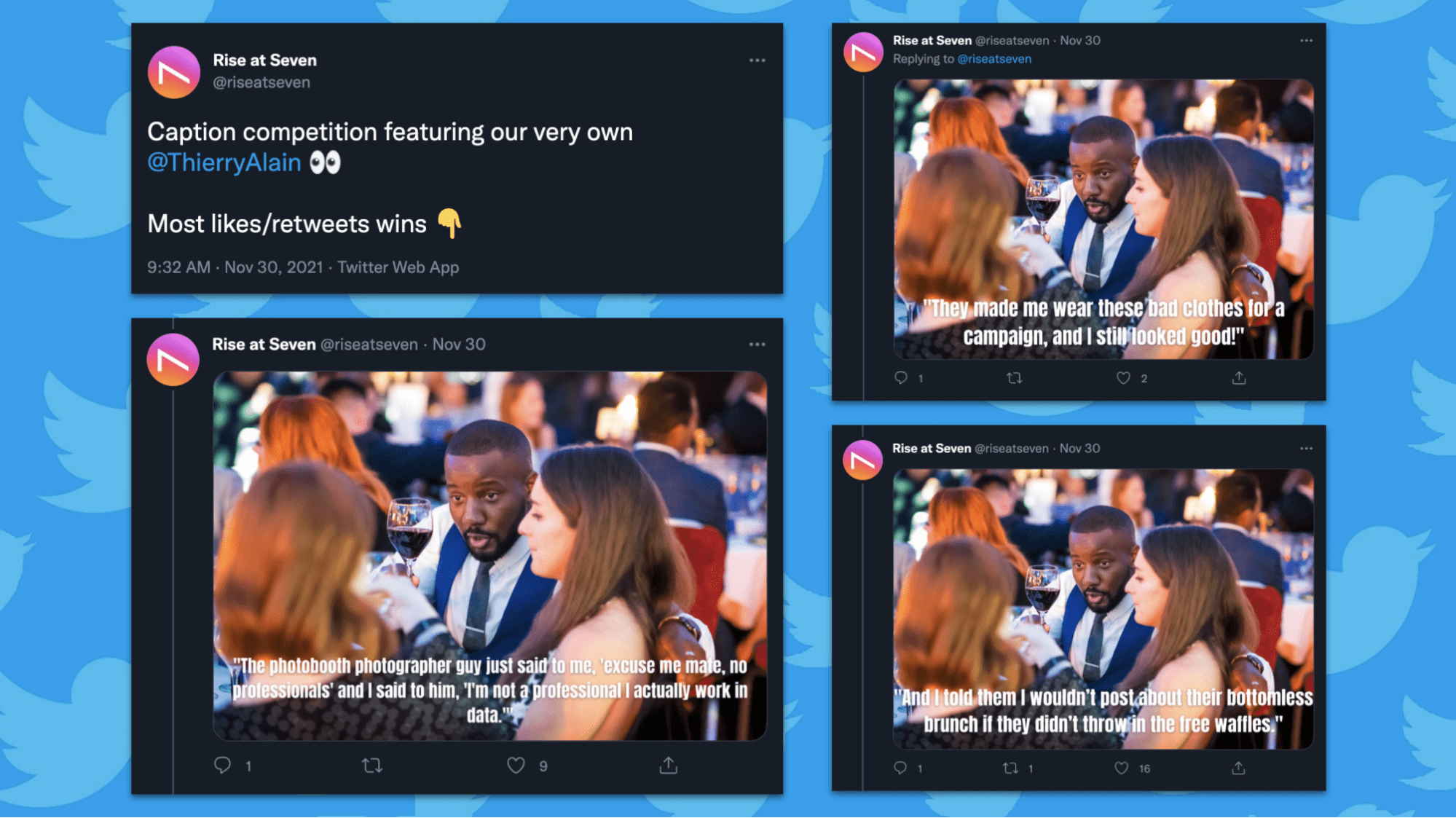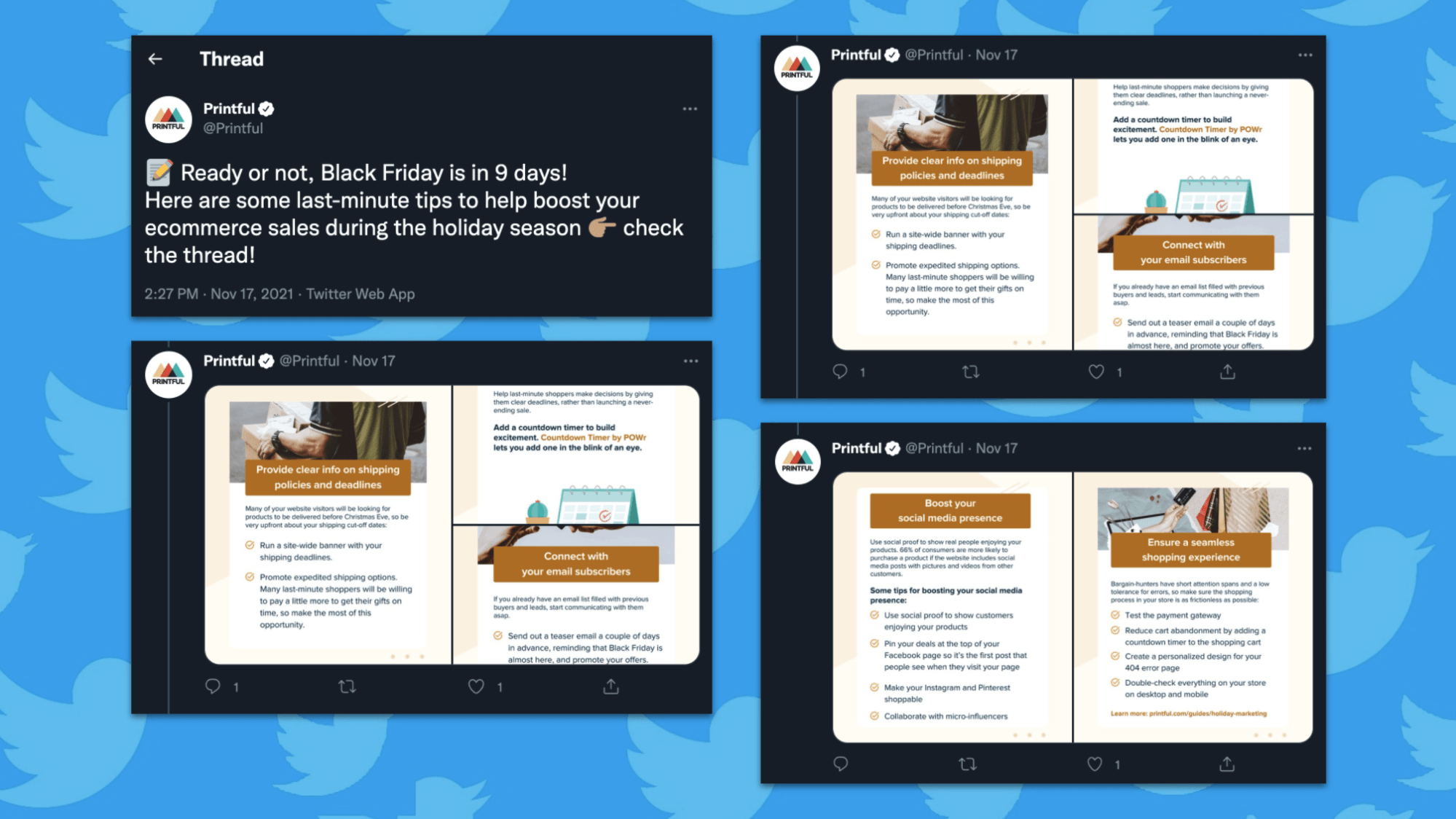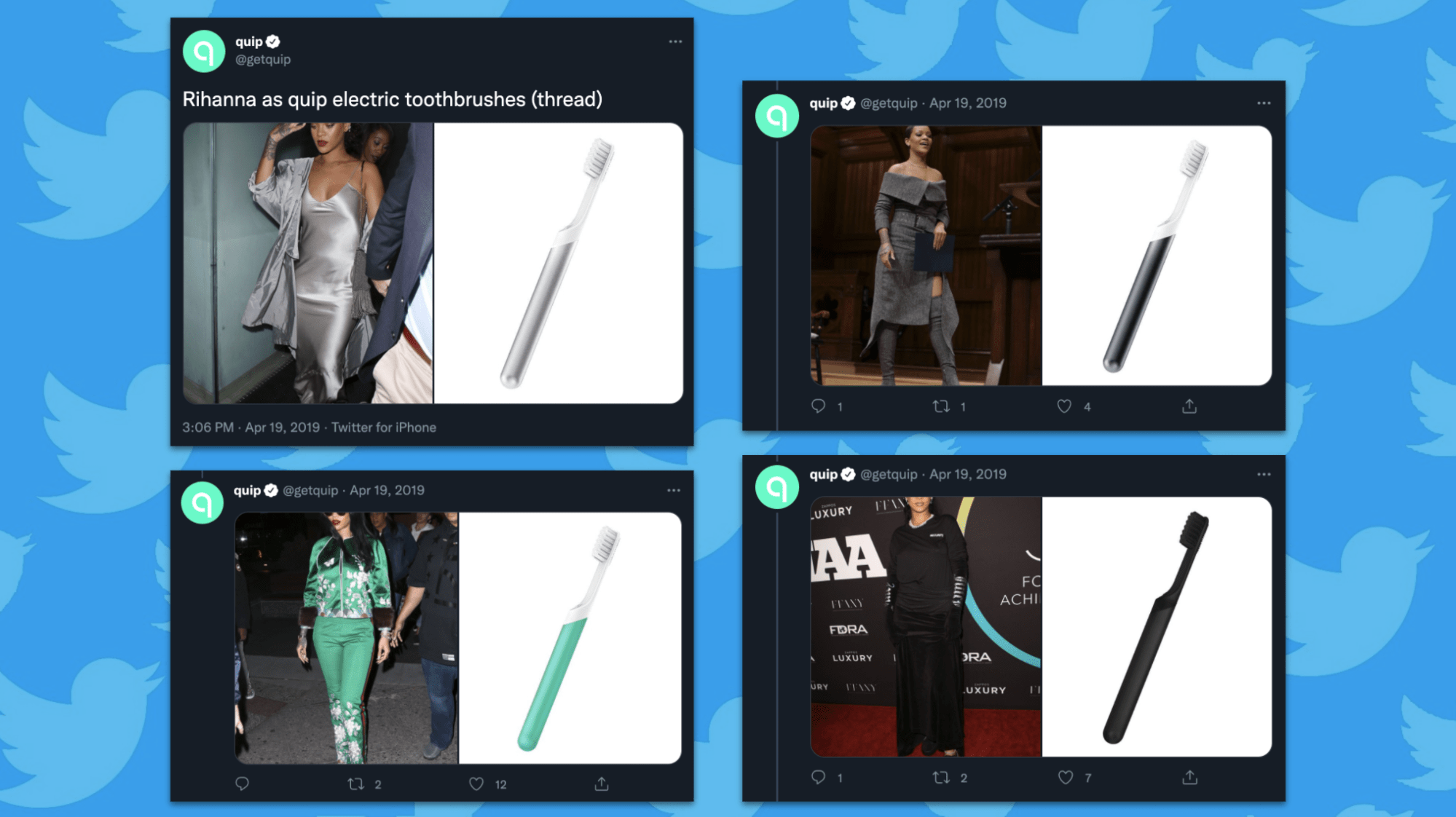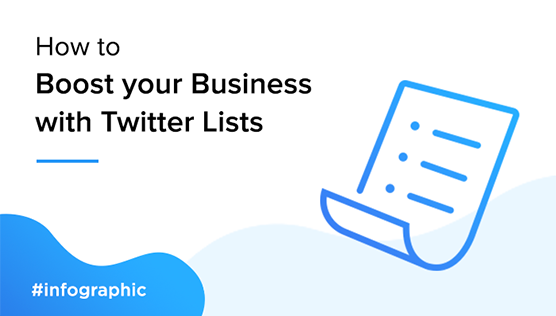How to write a Twitter thread like a pro (Advice from marketers)
- Last Updated : August 17, 2023
- 10.6K Views
- 8 Min Read

This is a guest post from Devin Pickell is a Growth Marketing Manager at Privy. He combines his skills in content marketing, SEO, data analysis, and partnership strategy to grow small ecommerce brands.

It’s hard to scroll through your Twitter feed today without coming across a thread from one of your favorite brands or content creators.
Threads have become popular in recent years as they allow people to tell complete stories, share tips, or offer advice outside the limitations of a single Tweet. These types of posts can get such great engagement, which is why Twitter acquired Threader, a once-popular bot account that combined threads into single articles for users to read. Threader now powers Twitter Blue’s native thread-reading feature, which users can pay for.

If you’re trying to grow your Twitter following or get more engagement on your profile, threads can be an attractive option—especially for people in digital careers such as marketing, content creation, social media, or SEO. That said, putting together a series of Tweets and deciding how you want to structure your thread can be challenging.
What do you even write about? Which Tweet comes next? How do you decide when to end your thread? To answer these questions, we sought advice from a few marketing pros that are known for writing awesome threads. Let’s dive in.
Find your niche and start building your community
Twitter is a vast landscape with tons of small communities having conversations, debates, hosting Twitter Spaces, and other types of interactions. Breaking into these communities and being seen as credible can be difficult if you’re just starting out. Before even writing threads, you’ll need to decide which topics interest you the most and what you feel most comfortable publicly Tweeting about.
Amanda Natividad, Marketing Architect at SparkToro, says:
“Get very clear on your singular goal. Ask yourself honestly and specifically: What does success look like for you? Then build a content strategy to support that goal and a set of tactics to support that strategy. Chances are this will mean you'll need to home in on a niche, stick with 1-2 topics, and write threads that reflect your expertise or growing knowledge.”
Jeremy Moser, Co-founder and CEO of uSERP, agrees with this advice and says that the more you home in on your topics, the more likely Twitter will propagate your content to users in target communities via its algorithm. Now this isn’t to say that you should only Tweet about things in your niche, but establishing your topic expertise and writing about it consistently on Twitter is one of the best ways to amplify your reach.
While a niche helps you build your expertise and find like-minded users on Twitter, you’ll need to actually follow, reply, comment, DM, and use other types of engagement to start building your community. Jeremy says:
“Work on building a smaller audience first. Spend time building a genuine community of like-minded people in your niche. In that community, engage with each other, find new creators, and work on building a following of at least 1,000 people. Why? Before this, the majority of your content will flop, and chances are you haven't figured out your own voice or style yet.”
Follow creators you admire and engage with their communities. Add value to conversations instead of cookie-cutter responses. Send personalized DMs to creators if you found what they Tweeted about insightful. Be authentic when engaging with others and you’ll find your follower count start to grow.
Once you find your groove and start building your following, it’s time to begin ideating and writing your Twitter threads. Now onto some of the more tactical ways for approaching your thread strategy.
Find content inspiration to get the ideas flowing
You have your niche and have found success building a small but engaged community, so now it’s time to find inspiration for thread content. A good place to start is by sourcing ideas from your followers. Amanda says:
“I think about the questions that people ask me most frequently. These types of questions tend to cater to my expertise and interests, so I'm uniquely positioned to write about them.”
Amanda has a really great thread here about 11 prompts she uses for content inspiration. You can see some of her thoughts in the image below.

If you’re in a digital career, thread ideas that are sure to get some engagement are to post about tips and processes you’ve used that have helped you launch a product, write a book, hit your revenue goals, and other professional milestones your followers could resonate with. Jeremy says:
“I love writing threads about stuff that I've genuinely done that has been impactful for me. I don't write threads that often, maybe 1-2 times a month, and my focus is entirely on what works. Draw from your own experience and ask yourself: what lessons, tactics, strategies, ideas did I learn from this experience that can help others improve on X, Y, Z.”
And your threads don’t always have to be a highlight reel. You can share lessons you learned in times of failure or struggle. This level of candidness shows your followers that you’re human, you make mistakes, and you learn from them.
Structure your thoughts and start writing
Twitter threads aren’t meant to be thrown together haphazardly. You should take time to structure your thoughts before Tweeting them. Jeremy says:
“When writing threads, open a blank page and spend 20-30 minutes just writing about a topic. Find common themes you can pull together to focus on that topic. For example, rather than just 'here's how to do marketing,' you might talk about copywriting for a website to improve conversions.”
Once you sort your thoughts out, you can begin writing your thread. Luckily, Jeremy put together a step-by-step process of how he structured and wrote one of his most engaging Twitter threads on copywriting.

His process went as follows:
- Write a hook: Hooks are one of the most important and deciding factors as to whether your thread does well or completely flops. First, make it short and snappy. People are scrolling fast and don't have time to read a massive block of text. Next, make it about the reader, not you. Notice how in my hook I made a clear promise: read this and you'll improve clicks + conversions on your website, ads, emails, and more. What will the reader learn? What will they gain or accomplish? If you make the focus on the reader, they will continue to read and feel more compelled to reciprocate by reTweeting and sharing.
- Create visuals: Threads are great with just text, but images can solidify your point and appeal to multiple learning styles. Text alone can't always make your point, and characters are limited. Visuals explained the exact copywriting tips I was writing about with clear icons indicating what TO DO and what NOT to do.
Related:Zoho’s guide to Twitter image dimensions
Find the right length: Almost all of my threads follow the same length pattern: 10 tips. 10 ways. Anything more and people lose interest by the final Tweets and fail to hit your CTA or your “ask” of them to share. Anything less and the thread doesn't feel substantial enough to truly give value to the reader.
Ask. Ask. Ask: At the end of your thread, ask people to share it! Don't be shy. Ever watch a YouTube video and the creator says “like the video if you're still watching?” It's the same concept. If you made it that far, chances are you did indeed like the content. A simple ask can remind you of something you were probably planning to do but might have forgotten due to the fast-paced nature of Twitter. Ask people to share if they enjoyed it. The worst they'll do is ignore you. The best they'll do is help your Tweet spread like wildfire.
Applying the tips in this article
At Privy, we’ve been working threads into our social posting strategy to get more engagement. Below is an example of how I approached a thread using some of the tips laid out from Amanda and Jeremy.

This was a short thread promoting our Ecommerce Marketing ebook ahead of Black Friday and Cyber Monday. We knew it was something we wanted to promote due to the timeliness with BFCM around the corner but also because there was tons of expert insight packed into it for ecommerce marketers of all levels.
The thread took about 30 minutes to ideate, write the content, and gather screenshots. Following Jeremy’s step-by-step process, I structured it with:
The Hook: A completely free ecommerce marketing ebook releasing just in time for the holiday sales season.
Visuals: We know Tweets with images receive an average of 35% more reTweets, according to Twitter. With this best practice in mind, we hinted at some of the ebook content in the thread via screenshots. This also helped users decide whether or not they wanted to click through and download.
Length: Again, a short thread but packed with value. We didn’t want to include too much ebook content, only some teasers. Most importantly, we capped it with a CTA at the seventh Tweet.
Ask. Ask. Ask: Behind the scenes, we sent Twitter DMs and emails to marketers included in the ebook as well as close partners to help us boost it on their feeds.
Ideas for brands considering threads
The tips provided in this article are great for sole content creators with engaged communities, but also for brands looking to grow their social media strategy outside of posting links to blog articles. Here are examples of brands that nail their threads + some content inspiration.
Rise at Seven

Why this thread works: Meme marketing is here to stay, and what better way to use memes in your Twitter threads than to ask your followers to participate in a caption contest? Memes are refreshing, relatable, and easy to consume. Consider using them on your brand account, but do so sparingly.
Printful

Why this thread works: We talk about leading with value in threads, and Printful does just that by bringing forth its best tips for boosting ecommerce sales during the holiday season. In the thread, they provided step-by-step instructions for boosting your social media presence, providing clear expectations of shipping, running holiday marketing campaigns, and more.
Quip

Why this thread works: Connecting your campaigns to content like Quip did with its new line of toothbrushes is a great way to craft simple threads.
About the experts:
Amanda Natividad, Marketing Architect at SparkToro and a contributor for AdWeek. She considers marketing her third career and was previously a tech journalist and test kitchen cook. Amanda runs a newsletter called The Menu where she sends out marketing tips, one recipe, brief Twitter interviews via DM, and funny or valuable links to over 1,000 readers every other Sunday. She has over 47,500 Twitter followers at the time of writing this article.
Jeremy Moser, Co-founder and CEO of uSERP, Co-owner of Wordable, and a contributor for Entrepreneur. He has more than a decade of experience in copywriting and content marketing for large brands. Jeremy runs a newsletter called Zero to Million and has a professional development course called Copycourse.io where users can learn how to write high-converting landing pages in one week. He has over 46,000 Twitter followers at the time of writing this article.
 Ashwin
AshwinMarketer by day and writer/poet by night! I get the dopamine rush when my thoughts are put down as words or poems. A person with big time OCD (Obsessive Cinema Disorder).


